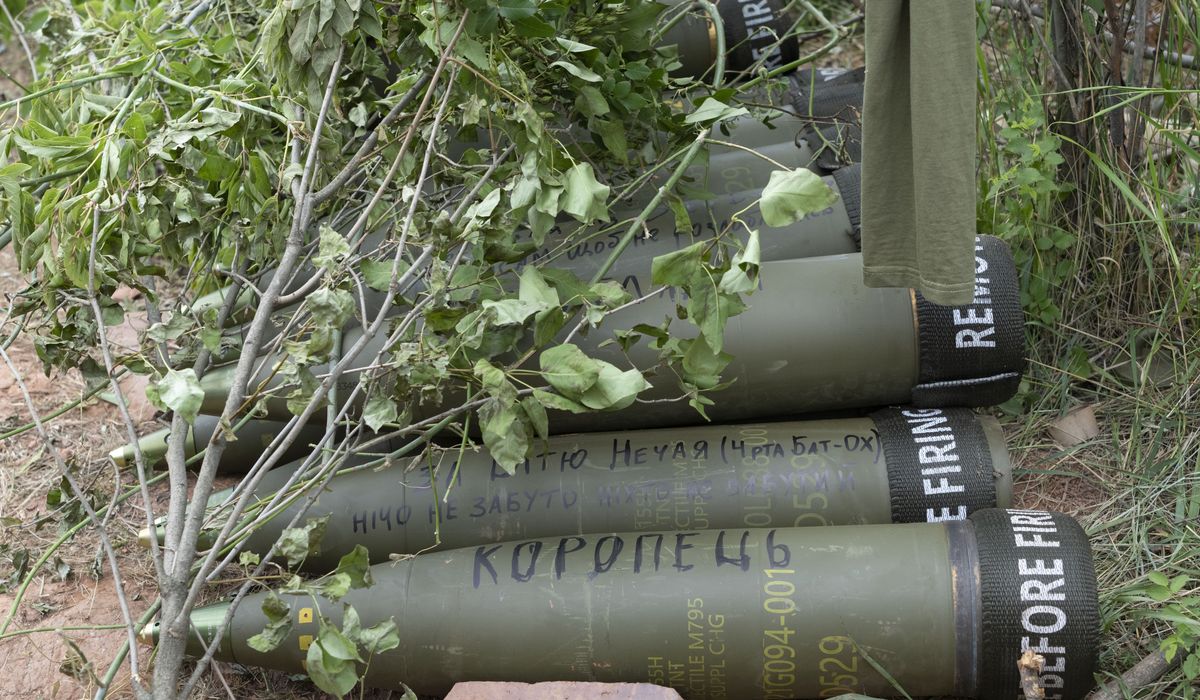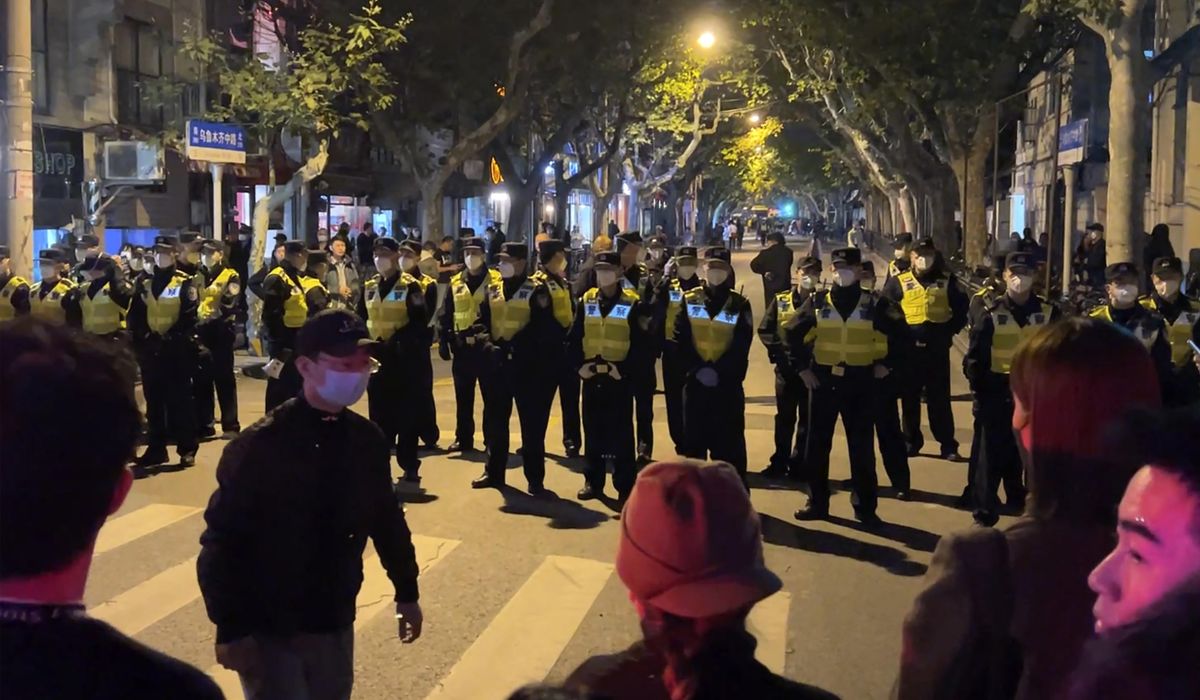Intense fighting over Ukraine forced the Pentagon to rethink its stockpiles of weapons. If another major war broke out today, would the United States have enough ammunition to fight it?
That’s the question facing Pentagon planners, not only as they seek to secure Ukraine for a war with Russia that could drag on for years, but also because they anticipate a potential conflict with China.
Russia fires up to 20,000 rounds a day, ranging from automatic rifles to truck-sized cruise missiles. Ukraine fires back 7,000 rounds a day, firing 155mm howitzers, Stinger anti-aircraft missiles, and now NASAMS air defenses, as well as thousands of rounds from small arms.
Much of Ukraine’s firepower is delivered through US government-sponsored weapons that are delivered to the front lines almost weekly. On Wednesday, the Biden administration announced an additional round of aid that will provide Kiev with 20 million more rounds of ammunition for small arms.
“We were not in a position where we only had a few days of critical munitions left,” Pentagon Comptroller Michael McCord told reporters this month. “But we are now supporting the partner that is.”
The production lines of the US defense are not designed to support a major ground war, and some of them, as for the Stinger, were previously discontinued.
That puts pressure on US stockpiles and prompts officials to question whether US weapons stockpiles are large enough. Would the US be prepared to respond to a major conflict today, such as if China invaded Taiwan?
“What if something exploded in Indo-Pak? Not in five years, not in 10 years, what if it happens next week?” Bill LaPlante, the Pentagon’s top arms buyer, said with reference to the Indo-Pacific Command. This month, he spoke at a defense procurement conference at George Mason University in Virginia.
“What do we have in any quantity? Will it really be effective? These are the questions we are asking at this moment,” he said.
The Army uses many of the same munitions that have proven most critical in Ukraine, including highly mobile artillery missile systems known as HIMARS, Stinger missiles and 155mm howitzers, and is now revising its stockpile requirements, Doug Bush, Asst. Minister of the Army for acquisition, told reporters on Monday.
“They see what Ukraine is using, what we can produce and how fast we can build up, all these factors that you would work on, ‘Okay, how (big) should your pre-war stockpiles be?’ – said Bush. “The slower you ramp up, the bigger the pile should be at the beginning.”
The military aid packages that the US sends out either draw supplies from stockpiles or finance contracts with industry to increase production. To date, at least $19 billion in military aid has been provided, including 924,000 artillery shells for 155 mm howitzers, more than 8,500 Javelin anti-tank systems, 1,600 Stinger anti-aircraft systems, and hundreds of vehicles and drones. It has also provided advanced air defense systems and 38 HIMARS, although the Pentagon has not disclosed how many munitions it is sending with the missile systems.
The gun infusion is raising questions on Capitol Hill.
This month, the administration asked Congress to provide Ukraine with an additional $37 billion in military and humanitarian aid in the post-election legislative session and approve it before Republicans take control of the House in January. The leader of Republicans in the House of Representatives, Kevin McCarthy from California, who is running for the post of speaker, warned that Republicans will not support writing a “blank check” for Ukraine.
Even with fresh money, stocks cannot be replenished quickly. The production lines of several systems, which turned out to be the most vital in Ukraine, were stopped many years ago. Keeping a production line open is expensive, and the military had other spending priorities.
The Pentagon awarded Raytheon a $624 million contract for 1,300 new Stinger missiles in May, but the company said it would not be able to increase production until next year due to a shortage of parts.
“The Stinger line was discontinued in 2008,” LaPlante said. “Really, who did this? We’ve all done it. You did it. We did it,” he said, referring to the decision by Congress and the Pentagon not to fund further production of the Army’s anti-aircraft munitions, which can be launched by soldiers or mounted on a platform or truck.
Based on an analysis of past military budget documents, Mark Kanchian, a senior adviser at the Center for Strategic and International Studies, estimates that the 1,600 Stinger systems that the US has delivered to Ukraine make up about a quarter of the total arsenal.
The HIMARS system that Ukraine has used so effectively in its counteroffensive faces some of the same problems, Laplante said.
“What is saving Ukraine now and what everyone in the world wants, we have stopped production,” he said.
HIMARS production was discontinued by the Army from about 2014 to 2018, LaPlante said. The Army is now trying to ramp up production to eight a month or 96 a year, Bush said.
The effectiveness of HIMARS in Ukraine has also sparked interest in other countries. Poland, Lithuania and Taiwan have restored order, even if the US is trying to rush more into Ukraine. If the conflict drags on and more HIMARS munitions become a priority for Ukraine, this could potentially limit US forces’ access to live-fire training rounds.
This month, the Pentagon announced a $14.4 million contract to accelerate production of new HIMARS for replenishment.
“This conflict has shown that the production of munitions in the United States and among our allies is likely insufficient for major land wars,” said Ryan Brobst, an analyst at the Center for Military and Political Power at the Foundation for Defense of Democracies.
The US also recently announced it would supply Ukraine with four Avenger air defense systems, portable launchers that can be mounted on tracked or wheeled vehicles, to provide another shorter-range option against Iranian drones used by Russian forces. But the Avenger systems also rely on Stinger missiles.
Pentagon deputy spokeswoman Sabrina Singh said the stockpile concerns had been taken into account.
“We wouldn’t have fielded these Stinger missiles if we didn’t feel we could,” Singh said at a recent Pentagon briefing.






